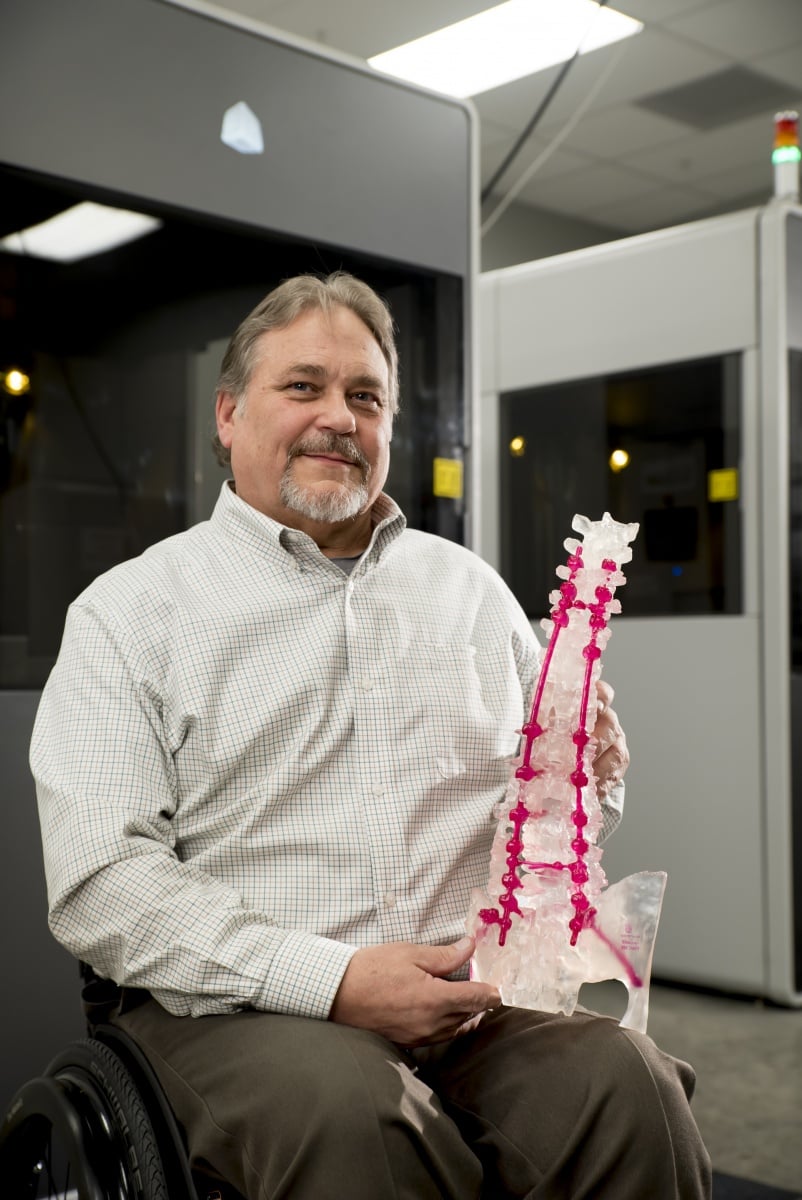
When national sled hockey champion Mark Weimer woke from the grog of a complicated 15-hour spinal surgery, he immediately knew it was a success based on the conspicuous lack of pain that had driven him to the OR. Left partially paralyzed by a fall from construction scaffolding in 1984, Weimer has undergone multiple spinal fusion surgeries over the years that, in combination with his neurological condition, led to the deterioration of the remaining spinal disks and vertebrae below the fusion site. By 2014, the resulting compression of his nerves and spinal cord began to cause pain in his quads, in addition to bowel and bladder problems. After more than a year of consistent pain, Weimer turned to Dr. George Frey of Mighty Oak Medical for a solution.
In turn, Dr. Frey contacted 3D Systems Healthcare to enlist our digitization and manufacturing services to help him plan Weimer’s surgery. Using Weimer’s CT scan data we were able to generate a 3D model of Weimer’s spine that accounted for both his natural anatomy and the foreign structures left from previous surgeries. With this information, Dr. Frey was equipped to design his surgical approach and plan the navigation required to safely address and avoid critical regions using his patented FIREFLY® Technology for pedicle screw guidance.
Dr. Frey took the digital representation we provided and used it to map the desired trajectory of each required pedicle screw. Mighty Oak Medical then designed the associated surgical guides and sent them to 3D Systems for 3D printing on our ProX® 800 Stereolithography (SLA) printer, along with a foot-long reference model of Weimer’s spine. Both the guides and the reference model were printed in a plastic material that could be sterilized for use in the operating room.
Now that he is on the mend, Weimer is eager to get back to coaching and sharing the love of the game with his grandsons. For more information on Mark Weimer’s surgery, read the full case study.